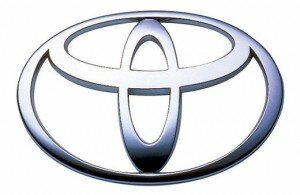Posts Tagged ‘sustainable business’
10 steps to employee engagement in sustainability
Today’s guest post is by Eric Brody, a member of the R.Bruer Sustainable Branding Collaborative. Eric is founder and principal of Shift Advantage, a sustainability consultancy in Portland, Ore. He was previously the sustainability business integration manager for Nike and sustainability manager for Nau, a technical outdoor and urban clothing company recognized for its innovative sustainability practices.

Much has been written about how to involve employees in more environmentally friendly office practices, such as reducing paper consumption, carpooling, turning off computers at night, recycling, and composting food scraps. As important as these and many other behaviors are to greening an office, they only take a business so far down the sustainability path.
If your vision is to build a sustainable business operating from a triple-bottom-line (people, planet, profit) philosophy, then sustainability is core to your business strategy. Your challenge involves more than green office practices. It means creating a business whose success is measured by its social, environmental and financial contributions.
Executives can only achieve their vision of a sustainable business by engaging and involving their work force. They need everyone in their companies on board. The question is how to engage all employees in the practice of strategic sustainability.
Fully engaging employees in strategic sustainability
At the risk of over-simplifying what can be a complex undertaking, I’ll offer a 10-step approach to employee engagement:
- Develop a strategic business plan that clearly articulates your social, environmental and financial objectives and strategies over a period of up to five years. I’ve worked with companies that set very aggressive stretch goals such as zero waste or zero carbon footprint by a certain date to ones that set more pragmatic goals such as reducing waste or the carbon footprint by a certain percentage.
-
Share your business plan with each group or department. Ask each group to review their individual plan and goals with the intention of incorporating or expanding the practice of sustainability into their metrics of success. Each unit may be different: Purchasing may adopt social and environmental performance requirements in their procurement contracts with suppliers. Product development and design may adopt design for environment (DfE) techniques into their processes.
 This type of thinking leads to innovations such as creating products that are lighter, repairable, utilize rechargeable energy sources, use energy more efficiently, or require low impact cleaning by the user. Accounting may investigate new models for measuring and tracking social and environmental impact, in addition to financial performance such as the greenhouse gases associated with business travel.
This type of thinking leads to innovations such as creating products that are lighter, repairable, utilize rechargeable energy sources, use energy more efficiently, or require low impact cleaning by the user. Accounting may investigate new models for measuring and tracking social and environmental impact, in addition to financial performance such as the greenhouse gases associated with business travel.
- Set department goals, both short term and long term (quarter, annual, three-to-five year). Companies may choose to make their environmental and social goals based on company totals or on a per unit or per dollar basis.
- For each job function and individual, determine responsibilities and expectations related to achieving the department’s and the overall business’ sustainability goals. As much as possible, make this an exercise of co-creation between a manager and an employee. You want every employee feeling enthused and empowered to make a difference. You also want to let employees know their contributions to sustainability will be a factor in their annual performance reviews (see Step 7). Set goals that are SMART: specific, measurable, attainable, realistic, timely.
- Provide training for each employee to grow competency and skills related to improving their individual contributions to your triple bottom line. Where possible, develop or seek sustainability training that is domain-specific, e.g., marketing, product development, manufacturing, customer service, human resources. This can include sending your employees to conferences or workshops or participating in industry or cross-industry collaborative working groups that are addressing specific issues such as water, logistics, fair labor and energy efficiency.
- Check-in regularly (weekly, monthly, quarterly) to monitor progress on the sustainability front, such as in manager/employee one-on-ones or staff meetings. This enables mid-course corrections and prevents year-end disappointments in group or individual performance.
- During annual reviews, evaluate each employee’s performance related to his or her individual and group sustainability goals. This reinforces the importance of achieving these to the company.
- After their performance reviews, ask employees to produce new or revised 12-month SMART goals to help their departments and the company achieve sustainability objectives. Be sure to share with employees any changes to business or department plans so they can align their individual efforts accordingly.
- Throughout the year, acknowledge and celebrate individual and group sustainability achievements across the company. Consider contests that motivate individuals and groups to out-perform each other and help make the sustainability journey about having fun and making a difference.
- Work with each department to engage their stakeholders and report publicly the achievements and challenges. This may include summits with your supply chain, reporting achievements and challenges to the public through corporate responsibility reports or websites or engaging customers through customer surveys and communications. The Global Reporting Initiative (GRI) provides a thorough framework for corporate responsibility reporting.
We have seen great success with companies that take these steps to fully engage their employees. This strategic approach moves sustainability from theory to practice within a company. The more engaged employees are, the more they will help your business innovate, achieve industry leadership, reduce costs and increase market share.
Imagining the ‘Sustainable Communicator’
Based on the scale of green marketing we see across all media today, you’d think the practice of sustainability is spreading like wildfire throughout business. And you’d be wrong.
I was reminded of the green vs. sustainability disparity as I was preparing a talk I gave last week to the Communicators Conference in Portland, Ore. In the talk I outlined a vision for what I called the “Sustainable Communicator.”  If this vision came to pass today, I believe we’d see an immediate ratcheting back on the practice of green marketing and a spike in the practice of sustainability.
If this vision came to pass today, I believe we’d see an immediate ratcheting back on the practice of green marketing and a spike in the practice of sustainability.
Let me explain.
First, consider these two studies from 2009:
- In its study entitled “The Road Not Yet Taken,” the Sustainable Enterprise Institute reviewed the public information disclosed by companies in the Russell 1000 Index and concluded: “evidence of any broad spectrum adoption of sustainable business practices is not to be found.”
- The Boston Consulting Group and MIT Sloan Management Review surveyed 2,000 business leaders worldwide as part of their study called “The Business of Sustainability.” The authors reported “a material gap between intent and action at most companies” they examined.
Which begs the question, if business is so slow to embrace sustainability, how can there be so much green marketing? I believe the explanation is this: Sustainability and green are two different concepts. They are not interchangeable. As The Natural Step Network tells us in their workshops, green is focused on details, tactics, environment and “less bad.” Sustainability is focused on whole systems, strategy, triple bottom line (not just the environment) and aligning with nature’s cyclical processes.
Retire green marketing
If I had my way, I’d retire green marketing, as I argued in a previous post. Green marketing in business is first and foremost product marketing. And as we know, you don’t have to be a sustainable business to produce a “green” product.
As the studies above indicate, businesses that adhere to the principles of sustainability and operate from a triple-bottom-line (people, planet, profit) philosophy are uncommon. That means the majority of “green” products are produced, marketed and/or sold by companies that fall far short of the sustainability ideal.
I’m not opposed to green products. We need more of them. But relying on otherwise brown companies to produce green products is at best a “less bad” situation (and clearly the primary reason for greenwashing). If we are to solve the pressing social and environmental issues of our time — clean water, peak oil, over-consumption, income inequity, population growth, climate change — we need businesses fully on board with sustainability.
Fusing brand, culture, sustainability
And here’s where the Sustainable Communicator comes in. This mythical professional fuses the practices of branding, culture change and sustainability into something completely new.
The Sustainable Communicator is a result of a fundamental shift in focus and responsibility:
- from marketing green products to building sustainable businesses
- from creating brand image to living your brand
- from specialist in communications to leader in sustainability, organizational development and branding
Yes, the Sustainable Communicator remains an expert in communications. That goes without saying. She is also a leader in sustainability, triple-bottom-line management, culture change and collaboration.
I admit this is a tall order and unrealistic in the short term. But if business is going to be truly sustainable, it needs new leaders to emerge in all disciplines, including communications. Because we know there’s a significant gap between what business intends to do and what it’s actually doing in the areas of social and environmental responsibility.
The need to close this gap is the impetus behind my firm’s recent formation of the Sustainable Branding Collaborative and 4D Branding process.
Closing the intent vs. action gap
Communications professionals have a major role to play here. We can’t continue green marketing and pretend the gap doesn’t exist. The buck stops with us, as storytellers, to only share what we know to be true and to accurately reflect where our companies are along the path of sustainability.
But storytelling alone is too passive, too removed from the ultimate need of businesses to move farther and faster toward become truly sustainable. The Sustainable Communicator is more than a storyteller. She’s a hands-on leader in transforming business. And it’s in that experience she recognizes green marketing is a thing of the past.
Sustainable branding: Promise is only half the story
“Promises are like babies,” an unknown author once said. “Easy to make, hard to deliver.”
Sounds like a good reason to never make a promise. Or better yet, good reason to think long and hard before making one.
Countless branding books and consultants describe a brand as a promise. That’s an inside-out view. If I’m on the outside looking at your business, I don’t care whether you make a promise. I care whether you keep it.  My guess is millions of Toyota owners feel similarly today about that company’s promise of quality.
My guess is millions of Toyota owners feel similarly today about that company’s promise of quality.
Promises have no value until or unless they’re consistently fulfilled. That gets lost among many who make their living in branding, communications and design. I used to be among them. Branding meant communicating a promise and persuading others to pay attention. If I did that well, I was doing my job.
My certainty about all of this gave way as I delved deeper into sustainability and carved out a sustainable branding practice. Everywhere it seemed, marketers were jumping onto the green marketing bandwagon. Meanwhile, consumer complaints of “greenwashing” kept growing as marketers used one hand to paint their companies or products green and the other to cover their eyes to the brown.
Words and deeds
Sustainable branding is not simply marketing communications by another name. It’s aligning what you stand for as a business with what people experience from you. Greenwashing does the opposite: It misaligns words and deeds.
Companies have been saying one thing and doing another forever. What’s changed is the technology and desire to call them out. Social media tools such as Twitter and Facebook and user-generated sites such as Yelp will expose hypocritical businesses in a heartbeat. And nowhere is the B.S. radar on higher alert than when a company speaks of social or environmental responsibility. People may overlook the advertisement that overstates a product’s benefits. But many can’t wait to bust the company that promises — and fails — to do good.
Carefully researched, considered and cultivated, a brand moves a business toward competitive distinction and customer relevance. Unfortunately, most businesses leave brand management to marketing communications. They equate branding with names, logos, taglines, messages, advertising campaigns and a consistent “look & feel.”
Where the buck stops
What our businesses say and how we look matters when separating ourselves as a brand. But not nearly as much as what we do as a business.
Want your brand to stand out from the crowd? Then let your actions do more of the talking. Nothing communicates as convincingly as a company whose employees, culture and operations consistently deliver a distinct, relevant product, service or experience.
This doesn’t happen by accident. It requires a CEO and senior managers who ensure their company walks it talk. Unless your marketing department runs the company, the branding buck must stop with the people who have ultimate authority to motivate, train or cajole everyone to deliver on the company’s core promise.
Stepping onto the path of sustainability makes this more imperative than ever.
When you pledge to build a more sustainable company, it’s like handing a magnifying glass to your customers, employees and other stakeholders and inviting them to inspect your every move. Witness the emergence of greenwashing watchdogs.
Living the brand
The prospect of greater scrutiny frightens some executives. Others say bring it on. They know integrity and accountability have always been hallmarks of great companies. And they don’t fear the added weight of social and environmental responsibility that a commitment to sustainable business practices demand. They’re simply trying to do the right thing.
But even their firms may need help living their brands. That’s why I’ve formed a team of experts in organizational development, sustainability, research, design and storytelling.
I look forward to sharing more about our collaboration soon. But you can be sure we’re clear on one thing: Making a promise is the easy part of branding. It’s the delivery we need to worry about.
Picking up where Nau left off
Sunday’s Oregonian attempts to explain what sustainable businesses might learn from the closure of apparel maker Nau early this month. The paper draws a conclusion similar to my immediate reaction when I heard the news: that Nau’s ambition got the best of it.
The Oregonian’s assessment is too brief to be of significant value to existing or would-be green entrepreneurs. For instance, the paper responds to one of its own questions, “Is a sustainable business unsustainable?”:
Nau wasn’t around long enough to tell. And certainly, organic food companies have profited as demand increases. And renewable energy ventures — biofuel, solar power — still attract investors’ bets. “There are a lot of sustainable plays that are more capital efficient and less risky,” said David Kirkpatrick, founder of SJF Ventures, a Durham, N.C.-based firm that invests in green companies.
I’m sure the paper felt compelled to ask this question because many who heard the news of Nau are probably asking it. It would be sad indeed if people concluded from Nau’s experience that operating a business with social, environmental and profit motivations equally in mind cannot be sustained long-term. Unfortunately, the paper’s response to its question doesn’t really get at the answer.
How about we flip the question: Is an unsustainable business sustainable? Or ask it from a macro view: Can our economy continue to run indefinitely on the backs of companies whose only measurement of success is financial return?
Throughout our history as a country that’s the way business has operated. And the American economy has flourished as a result. But for how much longer can this go on? Especially as China, India and other countries look to duplicate our success.
I hope people don’t see Nau’s failed attempt at “challenging the nature of capitalism” as evidence our economic system does not need serious repair. Yes, the company’s ambition exceeded its reach. But the folks at Nau knew there’s nothing sustainable about business as usual. And we all need to pick up where they left off.

